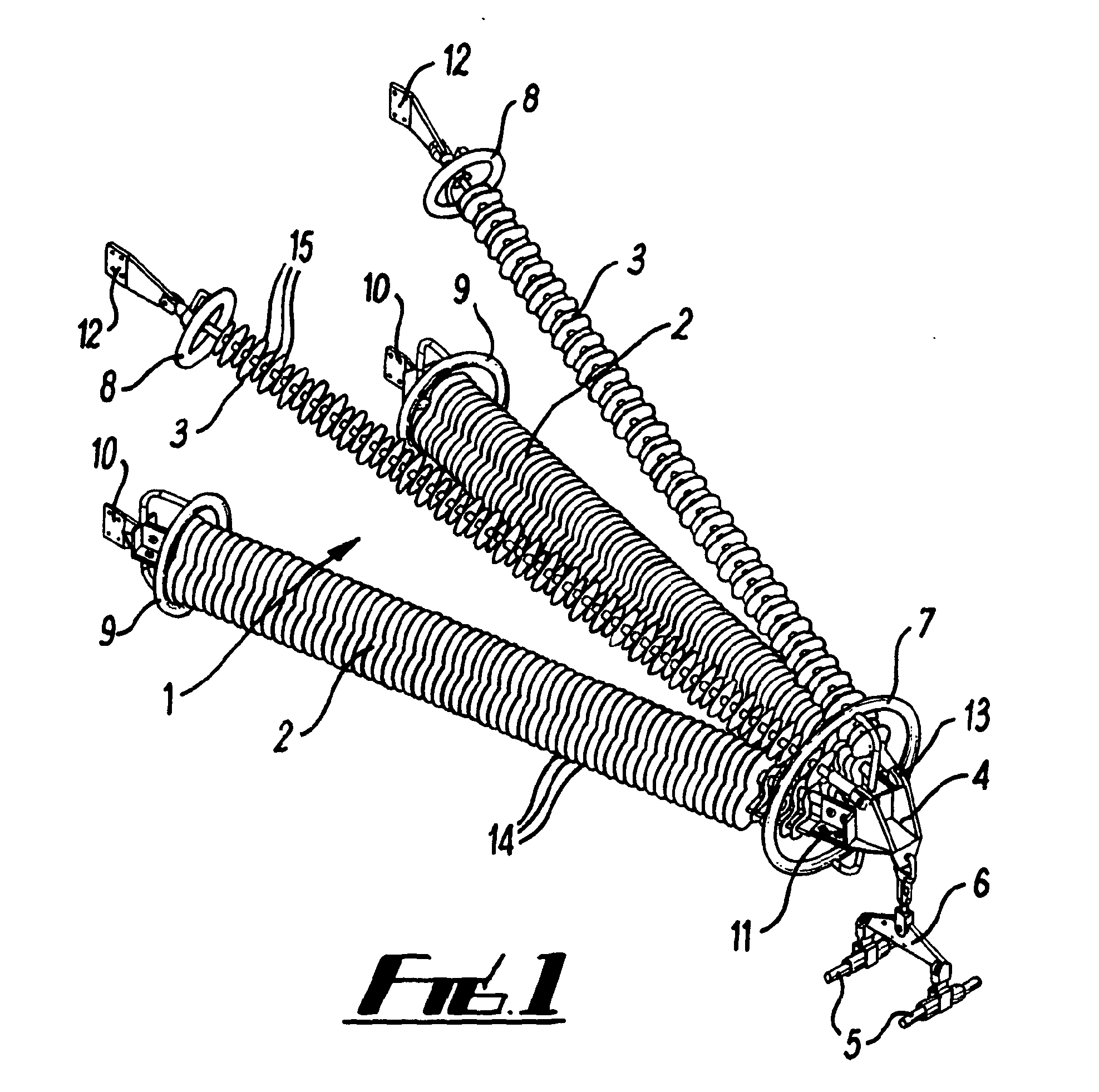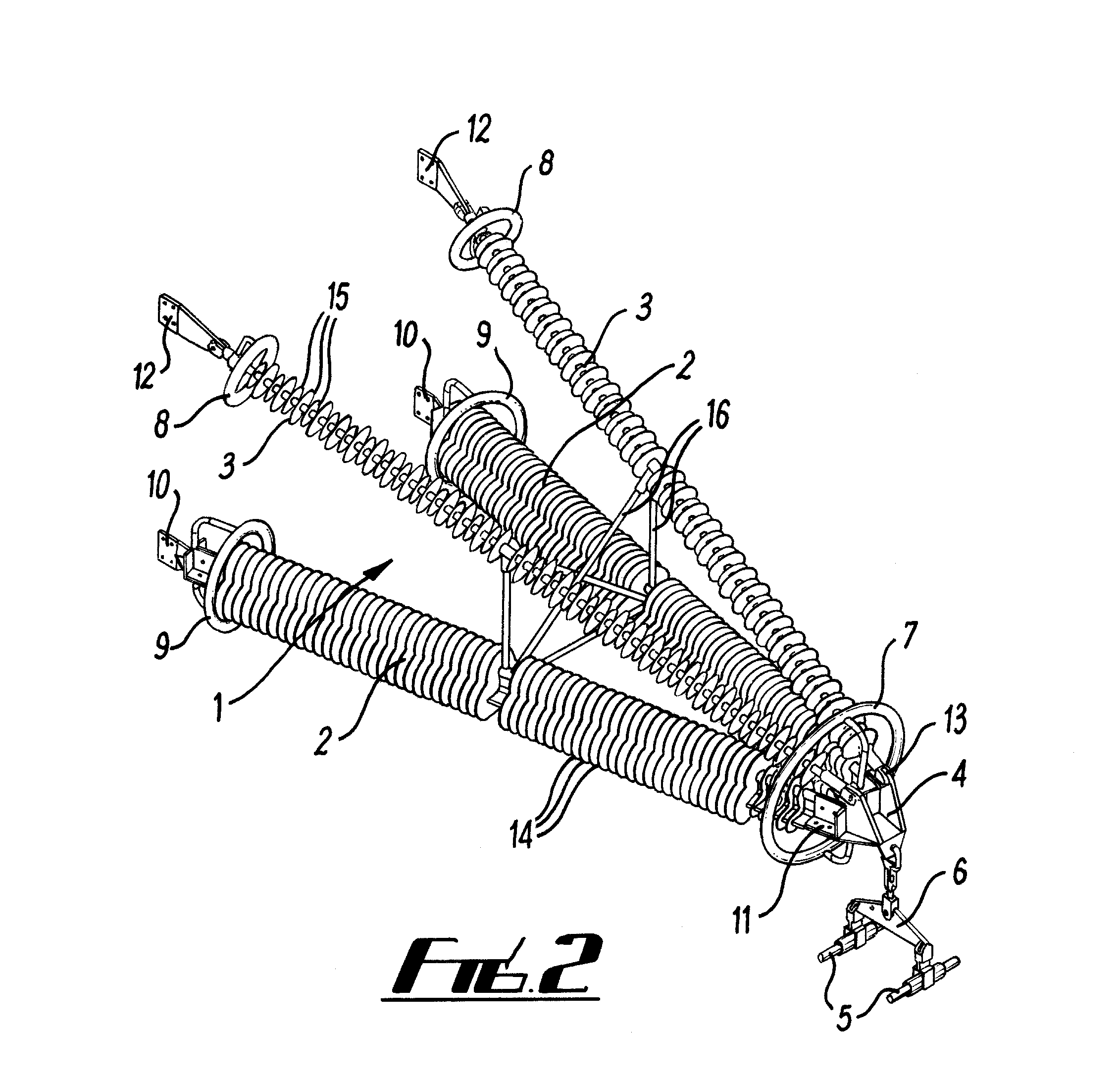Structural insulator
a structural insulation and member technology, applied in the field of structural insulation members, can solve the problems of increasing the risk of overloading certain routes increasing the amount of conductor sag, etc., and achieves the effect of increasing the amount of allowable conductor sag, increasing the risk of flashover, and increasing the capacity of overhead line current carrying capacity
- Summary
- Abstract
- Description
- Claims
- Application Information
AI Technical Summary
Benefits of technology
Problems solved by technology
Method used
Image
Examples
examples
[0087]Specific embodiments of the present invention will now be described, by way of example only, with reference to the accompanying drawings in which:
[0088]FIG. 1 shows an isometric view of a cross-arm according to a first 10 embodiment of the first aspect of the invention,
[0089]FIG. 2 shows an isometric view of a cross-arm according to a second embodiment of the first aspect of the invention, where substantially in plane redundant members are included,
[0090]FIG. 3 shows a rear end view of the second embodiment from the base of the cross-arm,
[0091]FIG. 4 shows a side view of the second embodiment of the invention,
[0092]FIG. 5 shows an expanded isometric view showing detail of the apex of the cross-arm of the first or second embodiment,
[0093]FIG. 6 shows an expanded side cross-sectional view along section A-A from FIG. 3 showing detail of the central conductive post of the grading ring at the apex of the cross-arm of the first or second embodiment,
[0094]FIG. 7 shows a cross-section...
PUM
 Login to View More
Login to View More Abstract
Description
Claims
Application Information
 Login to View More
Login to View More - R&D
- Intellectual Property
- Life Sciences
- Materials
- Tech Scout
- Unparalleled Data Quality
- Higher Quality Content
- 60% Fewer Hallucinations
Browse by: Latest US Patents, China's latest patents, Technical Efficacy Thesaurus, Application Domain, Technology Topic, Popular Technical Reports.
© 2025 PatSnap. All rights reserved.Legal|Privacy policy|Modern Slavery Act Transparency Statement|Sitemap|About US| Contact US: help@patsnap.com



